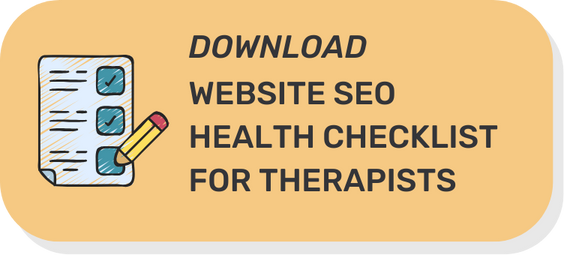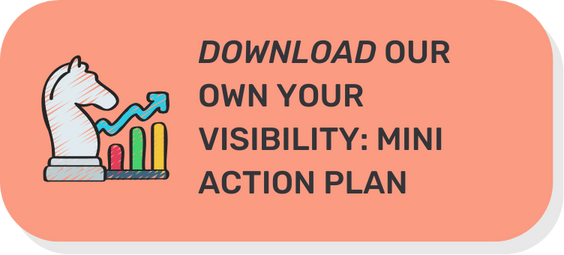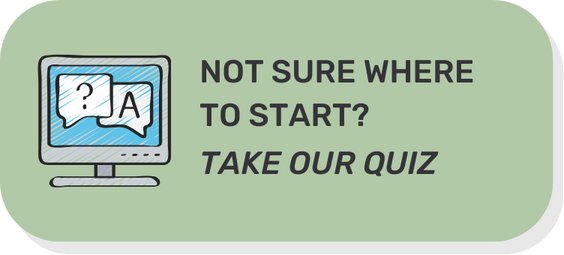1. Let’s Be Real About SEO
If you’re feeling overwhelmed by SEO, you are not alone—and more importantly, you’re already way ahead of the curve just by being here.
So first: take a breath, and give yourself some credit.
A lot of mental health professionals never even get this far. The fact that you’re reading this means you care about growing your practice in a way that’s grounded, ethical, and intentional. That already puts you in a powerful position.
Here’s the truth:
SEO isn’t about gimmicks.
It’s not about clicks or chasing algorithms or doing something fake or salesy.
Yes, it can involve some technical stuff, but that’s not the heart of it.
At its core, SEO is about one very human thing:
Helping real people who are out there, right now, looking for support—find you.
Want to learn how to do SEO step by step, without the jargon?
Learn SEO Yourself
Join the Course WaitlistBefore We Dive In, a Few Things to Keep in Mind:
1. Progress Over Perfection
There is no perfect SEO strategy. No perfect website. No magical checklist that guarantees you’ll do everything “right.”
But that’s actually great news.
Because SEO isn’t rocket science. You’re not defusing a bomb—you’re building something meaningful, bit by bit. Imperfect action can still create massive momentum.
You can start small and still make a difference. Every piece of content you create, every small tweak you make, is a step toward helping more people find the support they need.
2. It’s Not as Hard as It Feels
You probably say this to your clients all the time:
“It seems impossible now, but once we break it down together, you’ll see how manageable it really is.”
The same is true here. SEO seems big and intimidating—until we zoom in and start tackling it in bite-sized pieces. Once you understand the basics, it’s going to feel less like a mystery and more like a skill you can actually learn (and dare I say, maybe even enjoy).
3. You’re Not Alone
I’m right here with you. This guide is designed to be your companion, not a lecture. We’re going to take it one step at a time, together. And I promise: if you stick with it, you’ll look back in a few months and be amazed at how far you’ve come.
Ready? Let’s get into it.
Because your future clients are already out there searching. Let’s make sure they can find you.

2. What Even Is SEO for Therapists?
Let’s keep it simple.
Search Engine Optimization (SEO) is a set of strategies that help your website show up higher in search results when someone types something into Google—especially someone who’s looking for the exact kind of therapy you offer.
For example:
If you specialize in EMDR intensives for couples, a good SEO strategy would help your website appear when someone searches for something like “EMDR intensives for couples near me.” The higher your site shows up in those results, the more likely it is that someone who needs your help will find you.
At its core, SEO is about making it easier for the right people to find you—and that’s what makes it such a powerful tool for therapists. But the way we approach SEO for therapy practices is fundamentally different from how someone might do SEO for, say, a car dealership or an online clothing brand. And there are good reasons for that.
Why SEO for Therapists Has to Be Different
Ethical Considerations Matter Deeply
Therapists, psychologists, and other mental health professionals carry a responsibility that most businesses simply don’t.
You’re not selling a widget—you’re helping people heal. That means your marketing approach needs to reflect the same level of care, sensitivity, and ethics you bring into your clinical work. Many common marketing tactics (especially the pushy or manipulative ones) just aren’t appropriate here—and that includes certain SEO approaches, too.

You’re Not Trying to Get “Everyone”
In many industries, success is measured in volume. If you’re selling cars, the goal is to get as many people to your website as possible. The more people who see your inventory, the more likely it is that someone will make a purchase.
But therapy isn’t like that. You’re offering something deeply personal—and not everyone is your ideal client.
That means you don’t need thousands of people to visit your website. You just need the right people to find you—and to feel a sense of comfort, connection, and trust when they do.
🚫 It’s Not About Clicks. It’s About Connection.
As a therapist, you don’t need to chase vanity metrics like traffic spikes, bounce rates, or click counts. Those might matter to eCommerce businesses or high-volume blogs, but they’re not your measure of success.
What you need is:
- To show up when the right people are searching
- To communicate who you are in a way that makes them feel seen and safe
- To build trust before they ever send that first inquiry
In other words:
SEO for therapists isn’t about gaming the algorithm. It’s about building bridges.
3. The Three Pillars of Ethical SEO for Therapists
There are three core principles I always return to when creating SEO strategies for therapy practices. Think of these as your foundation:
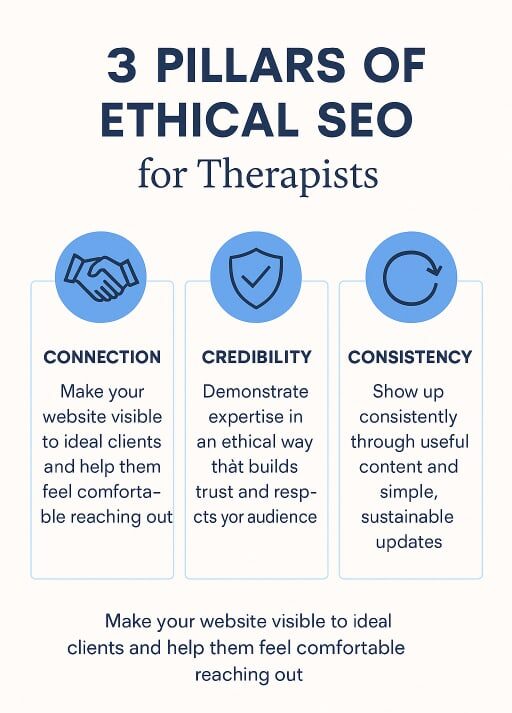
1. Connection
Our goal is to make sure your website is visible and inviting—to help people who need you find you, and feel seen when they do. Your website becomes a place of calm, clarity, and resonance.
2. Credibility
We’re not just trying to rank higher—we’re helping your website communicate your experience, professionalism, and approach in an authentic, grounded way.
That means:
- Showcasing your expertise without being salesy
- Respecting your visitors’ privacy and boundaries
- Building trust by demonstrating insight, empathy, and ethical integrity
Credibility also means optimizing for E-E-A-T: Experience, Expertise, Authority, and Trustworthiness (a core principle in how Google evaluates content).
3. Consistency
The biggest “secret” in SEO isn’t a trick or a hack—it’s showing up regularly.
SEO is built over time, through intentional actions like creating content, updating your site, and continuing to learn. And here’s the thing: when the process is clear, doable, and aligned with your values, it doesn’t have to take over your life.
You don’t need to blog every week or become a tech expert.
You just need to take small, consistent steps that align with your practice and your goals.
4. Your Ideal Clients Are Already Searching
Here’s something a lot of therapists don’t realize:
The people you’re best equipped to help?
They’re already out there. Right now. Typing their fears, struggles, and questions into Google.
They’re not waiting for a billboard or a referral from a friend. They’re searching for answers—quietly, privately, at 11 p.m. on their phones, trying to make sense of what they’re feeling.
And SEO is simply the process of making sure you show up when they do.
Think About This…
Imagine your ideal client. Someone you’d love to work with—maybe they’re navigating trauma, or adjusting to new parenthood, or trying to hold their marriage together.
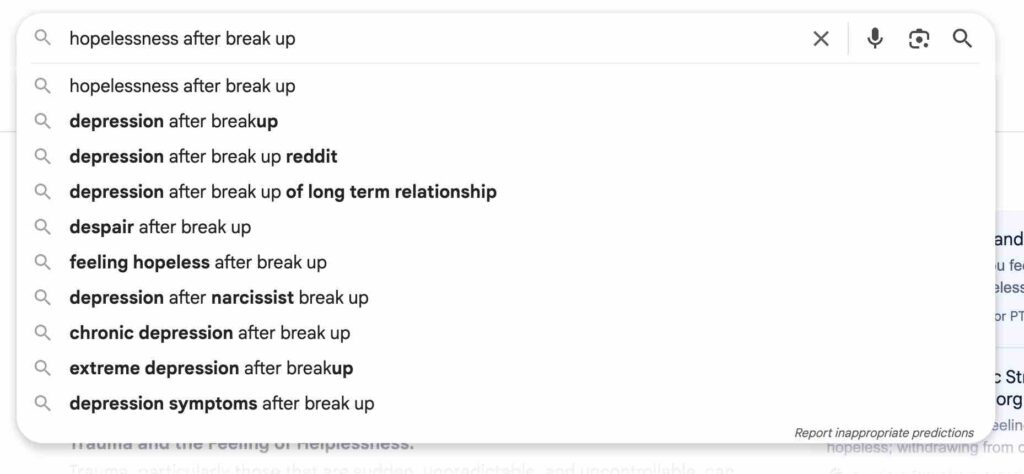
Now imagine what they might be typing into a search bar when they’re finally ready to get support. It might look like:
- “Why do I feel numb all the time?”
- “EMDR therapist for childhood trauma”
- “Marriage counseling intensives near Boston”
- “Therapist for anxious perfectionists”
- “Help for new moms who feel angry”
Every one of those searches is someone reaching out. And if your website isn’t showing up when they look… they might never find you.
That’s the why of SEO.
Is Your Website SEO-Ready?
Download our Website SEO Health Checklist for Therapists
Get Started now!So What Are Keywords—and Why Do They Matter?
When someone searches for something on Google, they’re using what we call keywords—words and phrases that describe what they’re looking for.
There are different types of keywords therapists might want to show up for:
|
📝 Type of Search |
💬 Example |
🧭 What It Means |
|
Symptom-Based |
“Why am I so anxious at night?” |
They’re in distress but don’t yet know what kind of help they need. |
|
Service-Based |
“IFS therapist in Minneapolis” |
They know what modality they want and are looking for someone who offers it. |
|
Solution-Based |
“Therapy for postpartum rage” |
They know what they’re dealing with and are ready to find help. |

Quick Reflection Exercise
Want to know what your starting keywords might be?
Think about your last five intake calls.
What exact phrases did people use to describe what they were going through?
What questions did they ask you?
Those aren’t just good talking points—they’re potential keywords.
You don’t need a fancy tool to get started. You already know what your clients are asking.
Let’s make sure your website answers them.
Why Your Website Might Not Be Showing Up (Yet)
If you’ve been feeling invisible online, you’re not doing anything wrong. Most therapist websites aren’t built with search engines in mind. A few common reasons you might not be showing up:
- Your service pages don’t include the words people are actually searching for
- Your location isn’t clearly listed or optimized for local searches
- You haven’t created enough content that answers client questions
- Your site structure makes it hard for Google to understand what your pages are about
None of these are permanent problems—and all of them are fixable.
The Big Takeaway
You don’t have to convince people to want therapy.
You just have to show up in the places they’re already looking for it.
SEO is about connection. Visibility. And being findable at the moment someone needs you most.
In the next section, we’ll explore exactly what kind of content helps you show up—and how to write it in a way that builds trust, not pressure.
5. Creating Content that Connects
5A. Writing a Service Page That Connects (With Both Humans and Google)
Let’s dig into what it really means to create a service page that works—not just in terms of search engine visibility, but in terms of helping real people feel seen, understood, and confident enough to reach out.
The first thing to keep in mind is this: if your goal is to show up more in Google search results, it’s important to have a separate page for each of the core services you offer. One of the most common SEO mistakes therapists make is listing all their services on one generic “Services” page and expecting that to be enough. But when someone is searching for something specific—say, EMDR intensives for couples—Google is much more likely to show them a page that’s entirely focused on that topic.
If your site doesn’t have enough content about a particular service, Google may not recognize that you’re a good match for that search query. And that means people looking for help in the exact areas you specialize in might never find you.
So what does that mean in practice?
Why You Need Individual Pages for Each Service
If you’re just starting out, or if SEO isn’t a top priority right now, it’s perfectly okay to have a single Services page with short descriptions of everything you offer. But if you’re ready to become more visible in search results—if you want your website to help the right people find you—then separate, dedicated service pages are essential.
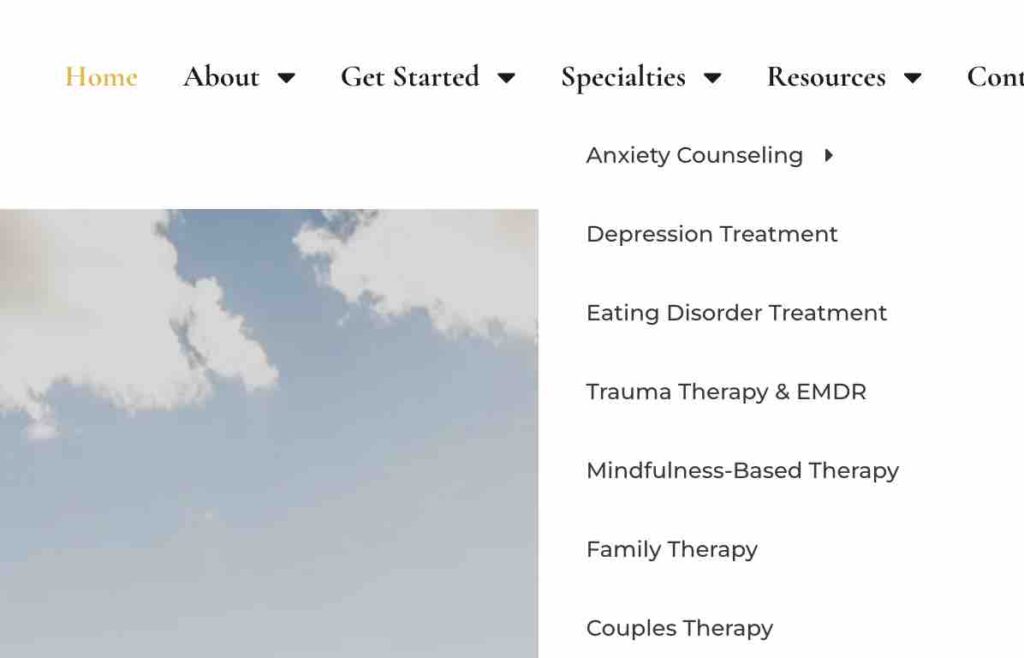
You might start with pages like:
- Individual Therapy
- Couples Counseling
- Family Therapy
- Therapy for Teens
Each of these pages should have enough depth to really help both Google and your potential client understand what you do, how you do it, and why you’re the right person to help.
But you don’t have to stop there.
Don’t Forget: Modalities and Conditions Can Also Be Their Own Pages
In addition to your main service categories, you may also want to create separate pages for:
- Modalities you specialize in—especially those clients are actively searching for
- Conditions or issues you frequently treat
For example, if you offer Gottman Method Couples Therapy, you might already mention that on your Couples Counseling page. But if clients are specifically searching for “Gottman therapy near me” or “Gottman-trained couples therapist,” a dedicated page will give you a much better chance of showing up in search results.
Likewise, if you use EMDR, IFS, ACT, or any other modality that people might be searching for by name, it’s worth considering a dedicated page. These pages can focus on explaining:
- What the modality is
- How you use it
- Who it’s helpful for
- What someone might expect in a session
Similarly, if you work with specific issues—like postpartum depression, PTSD, panic attacks, or religious trauma—those can be their own pages too. The more clearly and deeply you speak to what your ideal client is experiencing, the more likely they are to find you and feel safe reaching out.
Anatomy of a Great Therapy Service Page
Let’s walk through what makes a service page effective—both from an SEO perspective and a human one.
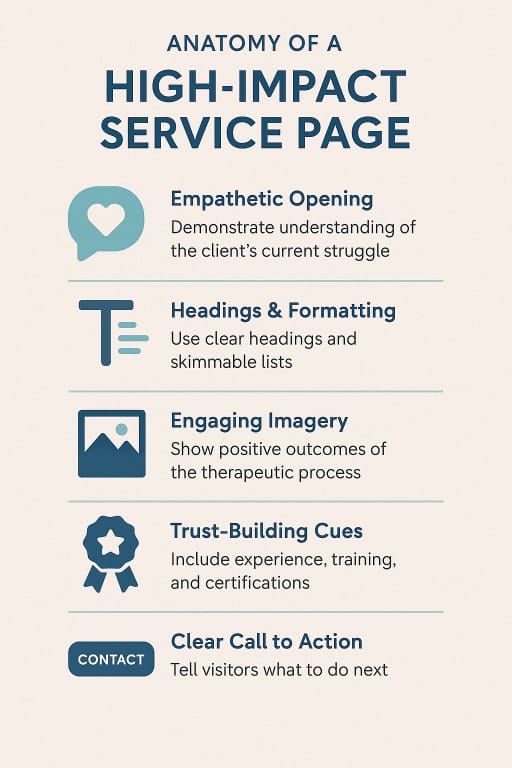
1. Start With an Empathic Opening
Begin with a few paragraphs that acknowledge what your potential client might be going through. Speak to their experience in a grounded, gentle way. Show them that you understand—not just the clinical diagnosis, but the emotional weight behind it. You want to demonstrate that:
- You get what they’re going through
- They’re not alone
- You’ve helped others navigate this before
- They can feel safe being honest with you
This is where trust begins.
2. Use Clear Structure: Headings, Subheadings, Short Paragraphs, and Bullet Lists
Remember, most people will skim your content first. They’re overwhelmed. They’re tired. And they’re looking for a sense of clarity and hope.
Make your content easy to absorb:
- Use short paragraphs to avoid visual fatigue
- Include descriptive headings so readers can find what matters to them
- Break up content with bullet point lists whenever possible
This is great for your clients—and also great for Google.
3. Include Skimmable, Reflective Content
Two sections I often recommend to my clients are:
“You might be experiencing…”
This could include symptoms, patterns, or struggles a potential client might relate to. For example:
- Frequent panic attacks
- Racing thoughts at night
- Feeling disconnected from your partner
- Replaying past experiences on a loop
This helps readers feel seen and makes it easier for them to say, “Yes, this is me.”
“How I may be able to help…”
Right after that, include a parallel section that explains how you approach treatment. This might include:
- EMDR for trauma processing
- Communication tools for couples in conflict
- Mindfulness-based strategies for anxiety
- Inner child work for complex relational trauma
The goal is to help the client see a path forward—and to begin imagining what working with you might feel like.
4. Choose Images That Reflect Healing and Hope
One common mistake I see is using images of distress—people crying, isolated, or clearly struggling. While the intention is to show empathy, these images can make visitors feel discouraged or even triggered.

Instead, use images that represent what’s possible:
- A person looking calm, centered, or connected
- A couple holding hands
- A moment of peace or hope
Think about it like this: when you visit a dental website, you don’t see images of cavities—you see bright smiles. Same idea. We want your website to reflect healing, not pain.
5. Build Trust Through Credentials and Experience
Somewhere on your page—either in your opening or further down—include trust-building cues:
- Relevant certifications or specialized training
- Years of experience working with this issue or population
- Evidence that you are both knowledgeable and approachable
This helps both Google and your potential client understand your authority, and it reinforces their confidence in you.
6. End With a Clear, Gentle Call to Action
Always include a clear next step. Don’t assume your readers know what to do.
Examples:
- “Ready to get started? Book a free 15-minute consultation here.”
- “Have questions? Fill out the contact form and I’ll reach out within 1 business day.”
- “Click here to schedule your first session.”
You might also give people multiple options. Some folks will prefer scheduling online, while others may want to reach out via email or phone. The more friction you remove, the more likely they are to take action.
5B. Blogging for Therapists: Tips on Creating Content That Connects
If you’ve ever heard “You should really start a blog” and immediately felt your shoulders tense up… you’re not alone.
Therapists are often told that blogging is essential for SEO—but rarely told how to do it in a way that feels manageable, authentic, and aligned with the ethics of clinical work.
So let’s demystify this.
Why Blog at All?
First, let’s be clear: you don’t need to blog every week, or write 2,000-word essays to have SEO success.
What blogging does help with is this:
- It gives Google more content to index, which means more chances to show up in search.
- It helps establish your expertise on specific topics you care about.
- It creates an easy entry point for potential clients—people who are Googling things like “why am I so irritable after having a baby?” and end up on your site.
Blogging isn’t about impressing an algorithm.
It’s about helping someone feel less alone—and showing them that you’re the right person to walk with them through it.
What Should Therapists Blog About?
The short answer: blog about the kinds of things your clients are already asking you.
If someone has asked you a question in session—or you’ve heard the same struggle phrased in different ways—chances are, someone is searching for that exact thing online.
Examples of blog topics that work well:
- “What Is EMDR, and What Does It Actually Feel Like?”
- “Therapy for Highly Sensitive People: What to Expect”
- “Postpartum Rage: What No One Talks About”
- “Can Couples Therapy Help If Only One Partner Wants to Go?”
- “Anxious or Just Burned Out? How to Tell the Difference”
The best blog posts:
- Answer real questions
- Use natural, conversational language (just like how you’d talk to a client)
- Reflect your therapeutic voice and values
If you’re not sure where to start, here’s a simple exercise:
Write down the last 3 questions a client asked you that made you think,
“Wow, a lot of people could benefit from hearing this.”
Congratulations—you’ve got your next 3 blog topics.
Blogging Tips for Therapists Who Hate Blogging
- Keep it short and sweet. Even 500–800 words is enough to make an impact.
- Write like you speak. You’re not writing a dissertation. You’re writing to a human who’s struggling and searching for hope.
- Use headings and bullet points. This makes your posts easier to read and helps with SEO.
- Include a gentle call to action. At the end of each post, let readers know what to do if they want to work with you. Example:
“If this resonated with you, and you’d like support in navigating these challenges, I’d love to talk.”
How Often Should You Blog?
Here’s the truth: consistency matters more than frequency.
If you can post once a month, that’s amazing. Once every 6 weeks? Still great. What matters most is that you:
- Choose topics intentionally
- Write with your ideal client in mind
- Show up steadily over time
Even a few high-quality blog posts can make a noticeable difference in how your site ranks and how potential clients connect with your work.
The Takeaway
You don’t need to be a writer. You don’t need to be a content machine.
You just need to be you—clear, thoughtful, and present.
Because blogging, done well, is really just an extension of what you already do in your sessions:
Reflect. Reassure. Offer a path forward.
And when you do that online, people who need your help can begin to find you before they even pick up the phone.
Want a simple way to organize your ideas?
Download the SEO Planning Worksheet6. Site Health Check: Is Your Website Technically Ready for SEO?
Let’s talk tech—but don’t worry, this isn’t going to get overly complicated.
When we talk about technical SEO, we’re really talking about whether your website is built in a way that makes it easy for search engines (like Google) and actual humans to access, navigate, and understand.
Think of it like this: you could have the most beautiful therapy office in the world—but if the lights don’t work, there’s no front door, and the sign is hard to read, people are going to walk right past it.
The same goes for your website.
Here’s a gentle, step-by-step site health check to make sure your online “office” is in good working order.
✅ Step 1: Make Sure Your Website Loads Quickly
Why it matters:
People will leave your site (and Google may rank it lower) if it takes more than a few seconds to load.
How to check:
Use this free tool: Google PageSpeed Insights
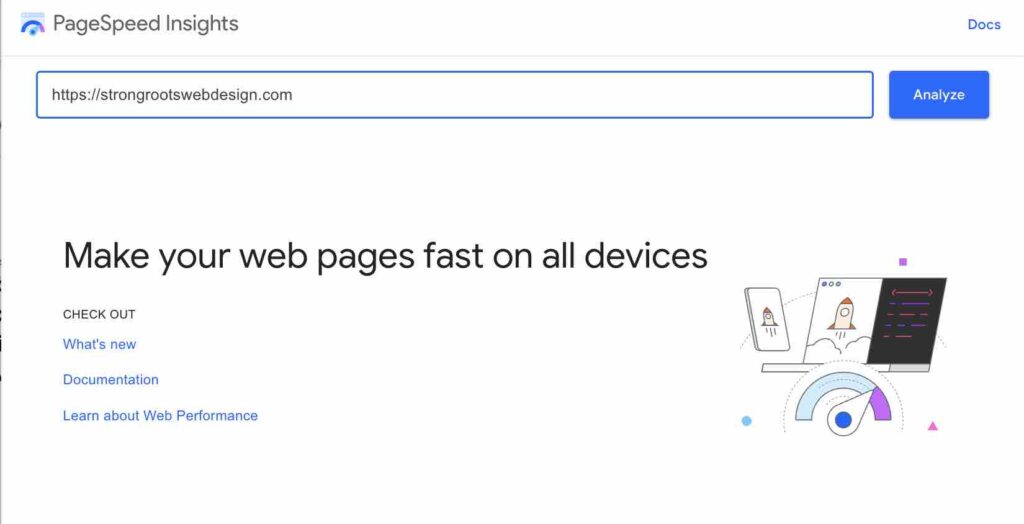
Just copy and paste your homepage URL into the box and click “Analyze.” You’ll get a performance score (0–100) for both desktop and mobile, along with specific suggestions.
What to do if it’s slow:
- Resize or compress large images (tools like TinyPNG or ImageOptim work well)
- Remove unnecessary animations or popups
- Ask your web designer to review speed optimization if you’re on a platform like WordPress
✅ Step 2: Check If Your Site Is Mobile-Friendly
Why it matters:
Over half of all web traffic now comes from phones. If your site doesn’t display well on mobile, visitors will bounce—and Google notices that.
How to check:
Use Page Speed Insights and see the mobile results or you can simply check your website through a desktop/mobile browser.
For a more straightforward way to check you can just simply look at your website from a desktop browser then click and drag the corner or edge of your browser window to make it narrower—this simulates the changes that happens on your content when it is shown on different screen sizes.
Note any texts that are unreadable, or links that can be clicked or any layout changes that should be changed if it’s not optimized for mobile.
Common issues include:
- Tiny, unreadable text
- Buttons too small to click
- Layouts that get weird on narrow screens
If your site isn’t mobile-friendly, it might be time for a website refresh.
✅ Step 3: Make Sure Google Can See Your Site
Why it matters:
If Google can’t “crawl” or index your site, it literally won’t show up in search results—no matter how great your content is.
How to check:
Search this in Google: site:yourdomain.com
Example: site:strongrootswebdesign.com
If you see a list of your website’s pages in the results, that means Google is indexing your site.
If you don’t see any pages:
- You might have something blocking search engines (like a plugin or setting)
- Or your site may be too new and hasn’t been crawled yet
What to do:
If you’re not sure, ask your web developer or SEO specialist to check your robots.txt file and submit your site through Google Search Console.
✅ Step 4: Use Clear, Organized Headings (H1, H2, etc.)
Why it matters:
Google uses your headings to understand what each page is about—and readers use them to quickly find the info they need.
Each page should have:
- One H1 tag (the main title of the page)
- Several H2 tags for main sections
- Optional H3s under those for subpoints
Example page structure for “Couples Counseling”:
- H1: Couples Counseling in Chicago
- H2: Is Couples Therapy Right for You?
- H2: What to Expect in Sessions
- H2: My Approach to Relationship Challenges
- H2: How to Get Started
If you’re on WordPress or Squarespace, heading styles are usually available right in your text editor. Just make sure you’re not using bold or larger font size to fake a heading—use real heading tags.
✅ Step 5: Install Google Search Console

Why it matters:
This free tool from Google helps you track how your site is performing in search results—and alerts you to issues you can fix.
How to set it up:
- Go to Google Search Console
- Click “Start now” and sign in with a Google account
- Choose “Domain” (if you can access your DNS settings) or “URL prefix” (simpler for most users)
- Follow the instructions to verify your ownership of the site
Once you’re set up, you can:
- See which keywords your site is ranking for
- Find out which pages are getting traffic
- Get notified if there are technical issues
This is one of the best free tools available for SEO—and it’s easier than most people think.
✅ Bonus: Secure Your Site with HTTPS
Why it matters:
If your site still shows up as “Not Secure” in a browser, Google may rank it lower, and visitors may feel uncomfortable submitting forms.
How to check:
Look at your URL in the browser. It should start with https:// and show a little padlock icon.
If it doesn’t:
Ask your hosting provider to install an SSL certificate—it’s usually free and just takes a few clicks.
Wrapping Up Some Technical SEO Must-Haves
You don’t need to be a tech wizard to keep your site healthy.
Start by running through this checklist once. Then revisit it a couple of times a year—or whenever you launch new content or redesign your site.
The truth is: a well-structured, functional website is one of the most powerful tools you have. When you combine that with clear content, a bit of strategy, and your unique clinical voice—you’re setting the stage for long-term visibility and meaningful client connections
Building Authority: Ethical Backlink Strategies for Therapists

Once your website is healthy and your content is in place, the next piece of the SEO puzzle is building your website’s authority—and one of the most powerful ways to do that is through backlinks.
What Are Backlinks, and Why Do They Matter?
Backlinks are simply links from other websites that point to yours. Google treats these links like votes of confidence—when another site links to you, it’s saying, “This content is worth sharing.”
And the more high-quality, relevant websites that link to your site, the more Google starts to trust you. That trust translates into higher rankings in search results, especially for competitive keywords.
What Makes a Strong Backlink?
Good backlinks are:
- From websites that are trustworthy and reputable
- Contextually relevant to your work or audience
- Naturally placed (not spammy or out of nowhere)
- Ideally from a variety of different websites over time
What’s great is that you don’t need dozens or hundreds of backlinks to see results—just a few thoughtful, meaningful ones can make a big impact.
Therapist-Friendly Ways to Earn Backlinks Through Outreach
These are all strategies that are values-aligned, ethical, and rooted in connection—not gimmicks.
1. Write Guest Blog Posts
Reach out to:
- Mental health bloggers or small publications
- Wellness professionals or coaches with complementary services
- Parenting, grief, or trauma-focused websites
- Other therapists in different niches
Pitch a helpful topic related to your specialty, and ask if you can contribute a guest post. You’ll usually get a byline with a link to your website, and sometimes even a short bio.
This works especially well when you have a clear niche or specialty that makes your voice stand out.
2. Be a Podcast Guest
Many therapy-adjacent podcasts are actively looking for guests with clinical expertise. Appearing on a podcast can help you:
- Reach new audiences
- Deepen your credibility
- Gain a backlink in the show notes or episode description
To get started:
- Make a list of podcasts in your niche (e.g., therapy for parents, relationship wellness, trauma recovery)
- Send a short, kind pitch introducing yourself and a few topics you could speak on
- Offer a simple link and bio they can include
3. Provide Quotes for Articles or Blog Posts
You can become a go-to expert by offering thoughtful insights to other content creators.
Places to look:
- Therapist friends or colleagues writing blogs
- Journalists or content marketers working on mental health-related articles
- Online communities for therapists or wellness professionals
Just let them know you’re open to contributing a quote or perspective, and ask that they include a link to your website when they publish.
You can also find requests through platforms like:
4. Offer Testimonials to Trusted Colleagues or Service Providers
If you’ve worked with a business coach, designer, or another therapist (especially across specialties), offer to write a testimonial. Many will be happy to include a link to your website alongside your kind words.
This is a great, low-pressure way to give something of value while also gaining a backlink from a professional connection you trust.
5. Engage With Local Organizations
Being part of your local community can also open backlink opportunities.
Consider:
- Joining your local Chamber of Commerce (many offer business listings with links)
- Speaking at local events or webinars hosted by health centers, libraries, or schools
- Collaborating with nonprofits or mutual aid groups in your area
These links are powerful not just for SEO—but also for connecting with clients who want to work with someone who understands their local culture and needs.
Final Thoughts on Backlinks
Backlinks are about relationships. They’re not just a technical SEO trick—they’re a sign that your work is part of a larger conversation, and that others trust and value what you have to say.
You don’t need to do everything at once. Start with one small outreach:
- Pitch a guest blog
- Reach out to a podcast
- Offer a testimonial to someone you admire
SEO doesn’t reward perfection—it rewards steady, consistent action rooted in real connection. And that’s exactly what you’re already good at.
Not sure where to start?
Take our quiz and find out nowCase Study: From Discouraged to Fully Booked—and Then Some
When I first started working with the owner of this group therapy practice, he was seriously considering shutting it down.
The practice wasn’t showing up in search results. New client inquiries had slowed to a trickle. And after pouring time, money, and energy into building something meaningful, he was starting to wonder if it would be more sustainable to go back to solo work.
But instead of giving up, he decided to try a new approach: SEO that was grounded in strategy, clarity, and connection.
Where We Started
At the beginning of our work together:
- The website wasn’t ranking for any significant keywords outside of the practice name
- Local visibility was nearly nonexistent
- The site structure didn’t reflect the full range of services the practice offered
- The owner felt overwhelmed by the idea of “doing marketing” and unsure how to move forward
What We Did
- Identified and Honed Their Niche
We started by clarifying the practice’s most important specialties. The practice offered several high-impact services—including support for relationships in crisis, emotional regulation, and communication for couples. We worked to organize those services into a small number of clear, distinct niche areas—each with their own optimized content.
- Built Out Service- and Location-Specific Pages
Instead of one catch-all Services page, we created:
- Dedicated pages for each specialty
- Pages targeting specific search intent (e.g., “Why is my wife always mad at me?”)
- Location-based pages tailored to the practice’s city and surrounding suburbs
This not only helped improve visibility, but also made it easier for site visitors to see themselves in the content and take the next step.
- Implemented an Ethical Content Strategy
We wrote content that:
- Addressed real, emotionally charged client questions (many of which the practice had been hearing for years)
- Used long-tail keywords aligned with how people naturally search for help
- Balanced emotional resonance with SEO best practices—ensuring Google and potential clients understood the value of each page
The Results
The results were striking—and they’ve only continued to improve.
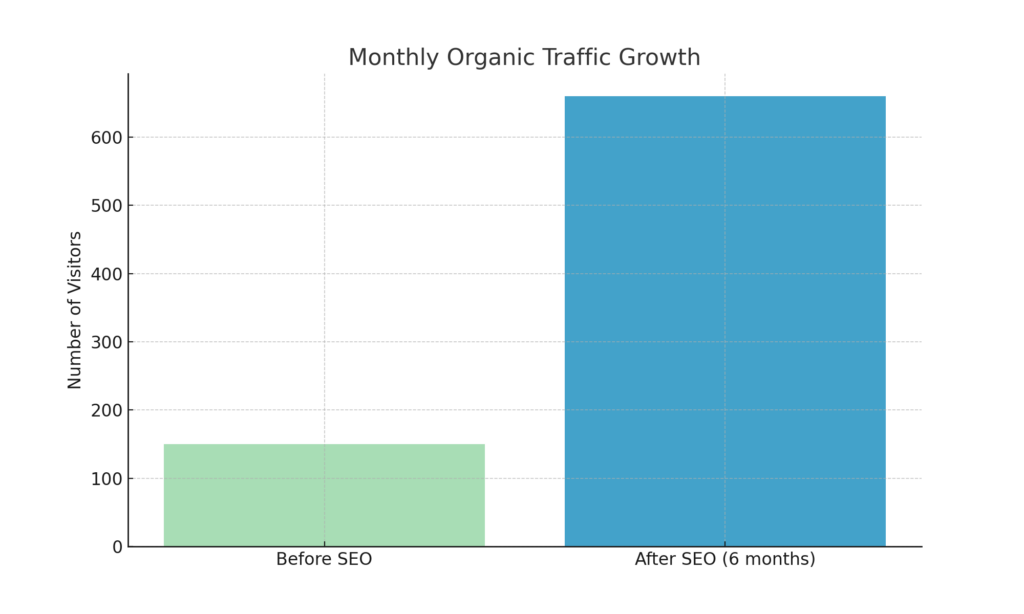

According to SEO analytics tools:
- Organic keyword rankings grew from fewer than 200 to over 800—a more than 300% increase
- Monthly search traffic increased to over 660 visitors, most of whom were actively looking for the services this practice offers
- The practice now ranks on page 1 for dozens of highly specific, emotionally driven search queries—the kinds of real questions clients type into Google when they’re in distress and looking for help
These weren’t broad, generic searches like “therapy near me.”
They were personal, raw, and deeply human—searches from people navigating relationship conflict, emotional pain, and disconnection in their lives.
You can see in the data: traffic is climbing, backlinks are growing naturally, and search visibility is improving week after week.
But even more important than the numbers?
The owner went from thinking about shutting the practice down…
to opening a second location and hiring new staff to keep up with demand.
Why It Worked
- We focused on real-life language, mirroring the way people talk when they’re searching for help
- We prioritized empathy and clarity, creating content that made clients feel seen
- We structured the site strategically, so each service and location had a clear, intentional presence
- We committed to consistent, high-integrity content, not quick fixes or gimmicks
Future Trends in SEO for Therapists: What’s Changing (and What’s Not)
One of the most common fears therapists have when it comes to SEO is this: “Will everything I’ve built stop working the next time Google changes something?”
It’s a fair question. The SEO world is full of hype, headlines, and algorithm updates that can make everything feel unstable.
But here’s the good news: the strategies that work best for therapists—empathic, human-centered, connection-driven strategies—are not going away. In fact, they’re more powerful than ever.
Let’s walk through what’s shifting in 2025 and beyond—and what will always stay the same.
Google Is Prioritizing Helpful, Human Content

Google has made it crystal clear over the past couple of years: it’s no longer interested in surface-level content stuffed with keywords. The algorithm now rewards content that is:
- Written by real people with real experience
- Clearly helpful and accurate
- Demonstrates expertise, authoritativeness, trustworthiness, and increasingly, experience (aka E-E-A-T)
For therapists, this is fantastic news. Because you’re already an expert in your subject matter. You don’t need to fake it or follow trends. You just need to communicate clearly and compassionately about the things you already help people with every day.
So if you’ve been writing your website or blog content in a way that mirrors how you speak to clients—with empathy, clarity, and insight—you’re already doing what Google wants to see.
AI Content Is Everywhere—But Human Voice Still Wins
Yes, AI tools like ChatGPT have changed how content is created. And yes, they can be incredibly helpful in speeding up the writing process, generating outlines, or helping you overcome writer’s block.
But what AI can’t replicate is your voice, your clinical wisdom, or the nuance that comes from years of experience working with real people.
More and more, Google is getting better at identifying thin, generic, or “auto-generated” content—and ranking it lower than content that clearly reflects lived expertise and a human touch.
If you want to use AI tools to support your content strategy, great. Just make sure you’re editing with care and putting your voice and values at the forefront. That’s what builds trust—and trust is what Google (and your clients) are looking for.
Voice Search and Mobile Optimization Are Still Rising
More people are using voice search than ever before. Instead of typing “anxiety therapist near me,” they’re asking their phones, “Who can I talk to about anxiety and overthinking?”
That means:
- Content should feel natural and conversational
- Headers and subheaders should reflect how people actually speak
- Structured content (like FAQs or short-answer sections) can help match voice queries
And as mentioned earlier, mobile-friendliness is non-negotiable. If your site isn’t easy to navigate on a phone, Google may not rank it as highly—and potential clients may bounce before they even read a word.
Topical Authority: Be the Go-To Voice in Your Niche
One of the most important trends in 2025 is something called topical authority.
Put simply, Google is starting to prioritize depth over breadth. Instead of giving high rankings to sites that cover every topic under the sun, it’s focusing more on websites that show clear depth and consistency in a specific area.
In therapist terms:
If you specialize in trauma, and your website includes multiple, high-quality pages and blog posts about trauma recovery, EMDR, complex PTSD, and healing relationships after trauma—you’re sending a strong signal to Google: “This person is a trusted voice in this space.”
So instead of trying to write a little bit about everything, lean into your specialties. Focus your content on the clients you most want to serve—and build a body of work around their needs, questions, and goals.
Visibility Beyond Your Website Matters More Than Ever
Google doesn’t just look at your website—it also looks at the wider digital ecosystem around you.
That means that being mentioned (and linked to) on other reputable websites helps build your credibility. And in 2025, it’s becoming increasingly valuable to:
- Be a guest on relevant podcasts
- Contribute quotes or blog posts to trusted platforms
- Speak at events (virtual or local) where you’re listed as an expert
- Collaborate with colleagues across specialties or locations
These activities don’t just improve your SEO—they grow your reach, build your reputation, and help more people find you through word of mouth and community trust.
What Won’t Change
As much as SEO evolves, there are a few things that remain true year after year—especially in the mental health world:
- People will continue searching online for help before they’re ready to talk to someone.
- Google will keep prioritizing websites that are helpful, trustworthy, and easy to navigate.
- Your authentic voice will always matter more than keywords alone.
- Connection and clarity will always be more powerful than clever hacks or gimmicks.
The Takeaway
You don’t need to chase trends or reinvent your strategy every six months.
What you do need is a clear, consistent, values-aligned approach that helps people find you when they need you most.
So if you’re showing up online with compassion, clarity, and a genuine desire to help—then you’re not just keeping up with SEO in 2025. You’re leading the way.
Frequently Asked Questions About SEO for Therapists
Even if you’ve been following along and things are starting to click, it’s completely normal to still have questions. This section is here to clear up some of the most common ones I hear from therapists—especially those who are curious but cautious about diving into SEO.
Do I have to blog all the time for SEO to work?

Nope.
You don’t need to write blog posts every week—or even every month—to see benefits from SEO.
What matters most is:
- Having clear, helpful service pages that speak to your ideal client
- Creating blog content that answers real questions people are Googling
- Publishing content consistently (even if that means once every 6–8 weeks)
Quality beats quantity. A few strong, well-targeted blog posts can go much further than dozens of rushed ones.
Can I do SEO myself, or do I need to hire someone?
You absolutely can do it yourself—especially if you’re willing to learn and take it step-by-step.
That said, SEO is one of those things that’s easier (and often faster) with support. Many therapists find it helpful to:
- Work with someone to build the foundation
- Get training or guidance so they can confidently take the reins
- Or outsource pieces of it while staying grounded in their voice and values
If you’re looking for hands-on support, I offer done-for-you SEO services designed specifically for therapy practices—so you can stay focused on your clients while I help you grow your visibility with clarity and care.
And if you’re more of a DIYer, I’ve got you too:
I’m currently building an online program just for therapists who want to learn how to do SEO themselves (without the jargon, overwhelm, or hard-sell tactics). It’s coming soon—and it’ll walk you through everything you need to build long-term, sustainable visibility for your practice.
How long does SEO take to work?
It depends—but for most therapy practices, you can expect to start seeing results within 3 to 6 months, with bigger growth over time if you stay consistent.
SEO is a long game. Unlike paid ads, it doesn’t deliver instant traffic—but the results are sustainable. Once your site is ranking well, it keeps working for you in the background, even when you’re not actively promoting yourself.
Is SEO still worth it if I already have a full caseload?
Yes—and here’s why:
- It protects you from future slowdowns (like cancellations, seasonal dips, or therapist turnover if you’re a group practice)
- It lets you be more selective about who you work with
- It allows you to expand into other offerings (like intensives, workshops, or waitlists)
- It builds your professional credibility and visibility in your niche
SEO isn’t just about filling your calendar—it’s about building a stable, flexible practice that can grow with you.
I’m a virtual-only therapist. Does SEO still help me?
Absolutely.
Virtual therapists can still benefit from SEO by targeting:
- Specific states or regions they’re licensed in
- Particular niches or specialties that clients are searching for
- Content that builds topical authority and visibility nationwide
You’ll want to be extra intentional with location language on your website, but SEO works beautifully for telehealth practices.
What if I’m not tech-savvy?
That’s totally okay.
You don’t need to be a tech expert to do SEO well. The most important parts of SEO—writing helpful content, organizing your site clearly, and showing up consistently—don’t require coding or complex tools.
And for the parts that do get technical (like site speed or mobile usability), you can always ask for help or hire someone for a one-time setup. Think of SEO like gardening: you don’t have to build the irrigation system—you just need to know how to tend to the soil.
Do I need to be on directories like Psychology Today for SEO to work?
No, you don’t.
While directories can offer short-term visibility, they’re not required for sustainable growth—and you absolutely can fill your practice by building visibility through your own website.
That’s exactly what SEO helps you do. When your site is optimized with clear content, real connection, and thoughtful structure, you’ll have a steady stream of clients finding you—without relying on platforms you don’t own.
What if I don’t know where to start?
Start small.
- Pick one service you’d love to be known for and create a page that speaks directly to the clients who need it.
- Choose one blog post topic based on something a client asked you recently.
- Submit a quote or guest blog to someone you admire.
If you’d like personalized help building or optimizing your SEO, you can reach out here to explore my done-for-you SEO support.
Or, if you’d rather learn how to do it yourself, you can join the waitlist for my upcoming online SEO course for therapists—and I’ll walk you through every step.
SEO isn’t all-or-nothing. It’s a process—and you’re allowed to take one small, manageable step at a time.
What to Do Next
You’ve made it to the end of a seriously comprehensive guide—so first, take a moment to appreciate how much you’ve just learned.
Whether you’re still wrapping your head around SEO or you’re already brimming with ideas, the next step is just to begin. And remember: small, imperfect action is better than waiting for the perfect plan.
Here are a few simple ways to move forward from here:
🪴 If you’re just starting:
- Choose one core service to focus on and make sure it has its own dedicated page
- Brainstorm 2–3 blog post ideas based on real client questions
- Run your site through Google’s PageSpeed Test or Mobile-Friendly Test
✍️ If you’re ready to create content:
- Write one page or blog post in your natural voice (you can always polish later)
- Focus on clarity, connection, and one specific topic at a time
- Add a clear call to action at the end—don’t leave people hanging!
🤝 If you want support:
- Reach out to talk about done-for-you SEO services if you’d like help building or optimizing your visibility
- Join the waitlist for my upcoming SEO course if you’d like to learn how to do it yourself, step by step, in a therapist-friendly way
Final Thoughts
You don’t need to be a marketer. You don’t need to be tech-savvy. You don’t even need to do SEO perfectly.
You just need to be willing to show up.
To tell your story clearly.
To share what you offer, who you help, and how.
Your future clients are already out there—searching.
Let’s make it easier for them to find you.



